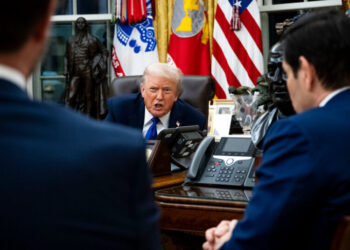Video of ICE Shooting Becomes a Political Rorschach Test
The basic sequence of the ICE shooting in Minneapolis on Wednesday is not in dispute: A Honda Pilot reversed, then...
Pizzeria owner defends ‘sassy’ replies to bad reviews as he goes viral
A pizza store owner has gone viral with his cheeky replies to those who leave bad reviews online about his...
2 Killed in Shooting Outside Mormon Church in Salt Lake City
A shooting outside a Church of Jesus Christ of Latter-day Saints meetinghouse in Salt Lake City on Wednesday killed two...
This City’s Housing Boom Is a Model for Mamdani
A few decades ago, Jersey City, N.J., was seen as a forlorn riverside strip of vacant warehouses, blighted streets, abandoned...
Dear Abby: My husband has cancer, but our children visit us too often and it is making our lives stressful
DEAR ABBY: My husband is battling cancer. He has good days and bad days. He is not at the end,...
The Sober Party Girl Revolution
Neva Coleman was in high spirits on New Year’s Eve. It was just after 8 p.m., and the private club...
Netflix’s His & Hers Is Too Grim to Be Fun, Too Silly to Take Seriously
As splashy thrillers of every style and subgenre proliferate on platforms clamoring for viewers’ rapt attention, what increasingly separates the...
‘Crazy idea’: Jimmy Kimmel breaks down major flaw in Trump’s Greenland takeover plan
The proposed takeover of Greenland by the United States has a series of flaws in the plan, according to Jimmy...
Conan O’Brien says ‘F Trump’ comics have been co-opted by anger, ‘just screaming’
Comedian and former late-night host Conan O’Brien criticized comics who are more focused on “screaming” about President Donald Trump than on being...
We Pressed Trump on His Conclusion About the ICE Shooting. Here’s What He Said.
President Trump wanted to run the tape. Just hours after an Immigration and Customs Enforcement agent shot a 37-year-old woman...














